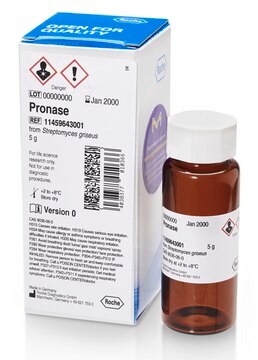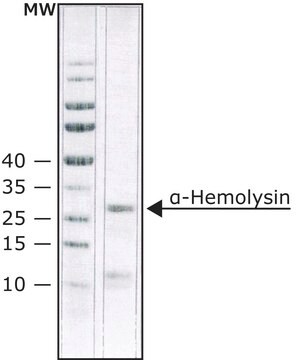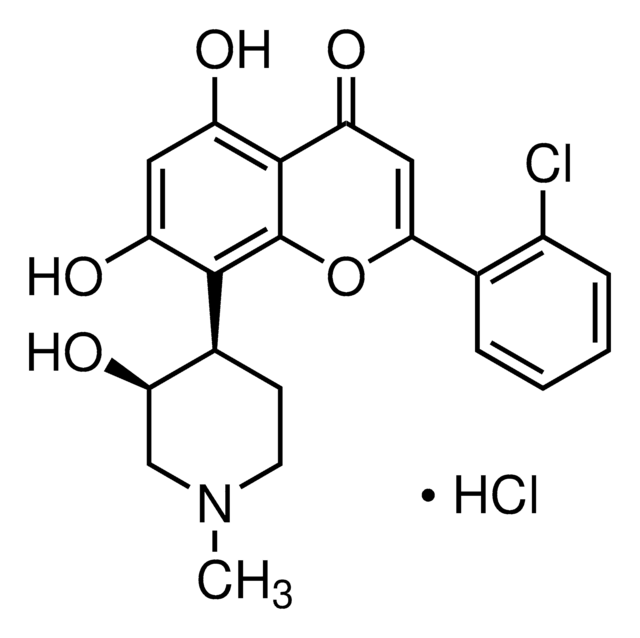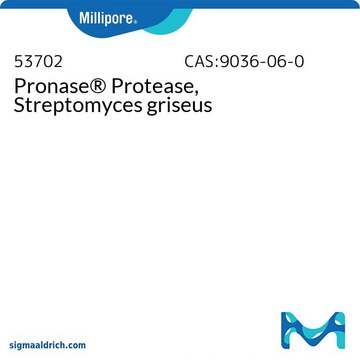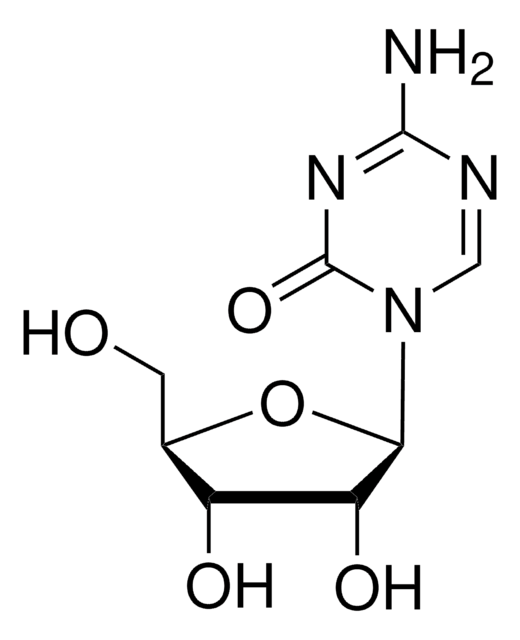S1014
Streptonigrin
from Streptomyces flocculus, ≥98% (HPLC), powder, antitumor antibiotic
Synonym(s):
Bruneomycin, Nigrin
About This Item
Recommended Products
product name
Streptonigrin from Streptomyces flocculus, ≥98%
Quality Level
assay
≥98%
antibiotic activity spectrum
viruses
mode of action
DNA synthesis | interferes
storage temp.
2-8°C
SMILES string
COc1ccc(c(O)c1OC)-c2c(C)c(nc(c2N)-c3ccc4C(=O)C(OC)=C(N)C(=O)c4n3)C(O)=O
InChI
1S/C25H22N4O8/c1-9-14(10-6-8-13(35-2)23(36-3)20(10)30)15(26)19(29-17(9)25(33)34)12-7-5-11-18(28-12)22(32)16(27)24(37-4)21(11)31/h5-8,30H,26-27H2,1-4H3,(H,33,34)
InChI key
PVYJZLYGTZKPJE-UHFFFAOYSA-N
Looking for similar products? Visit Product Comparison Guide
Biochem/physiol Actions
signalword
Danger
hcodes
Hazard Classifications
Acute Tox. 1 Oral
Storage Class
6.1A - Combustible acute toxic Cat. 1 and 2 / very toxic hazardous materials
wgk_germany
WGK 3
flash_point_f
Not applicable
flash_point_c
Not applicable
ppe
Eyeshields, Faceshields, Gloves, type P3 (EN 143) respirator cartridges
Certificates of Analysis (COA)
Search for Certificates of Analysis (COA) by entering the products Lot/Batch Number. Lot and Batch Numbers can be found on a product’s label following the words ‘Lot’ or ‘Batch’.
Already Own This Product?
Find documentation for the products that you have recently purchased in the Document Library.
Our team of scientists has experience in all areas of research including Life Science, Material Science, Chemical Synthesis, Chromatography, Analytical and many others.
Contact Technical Service